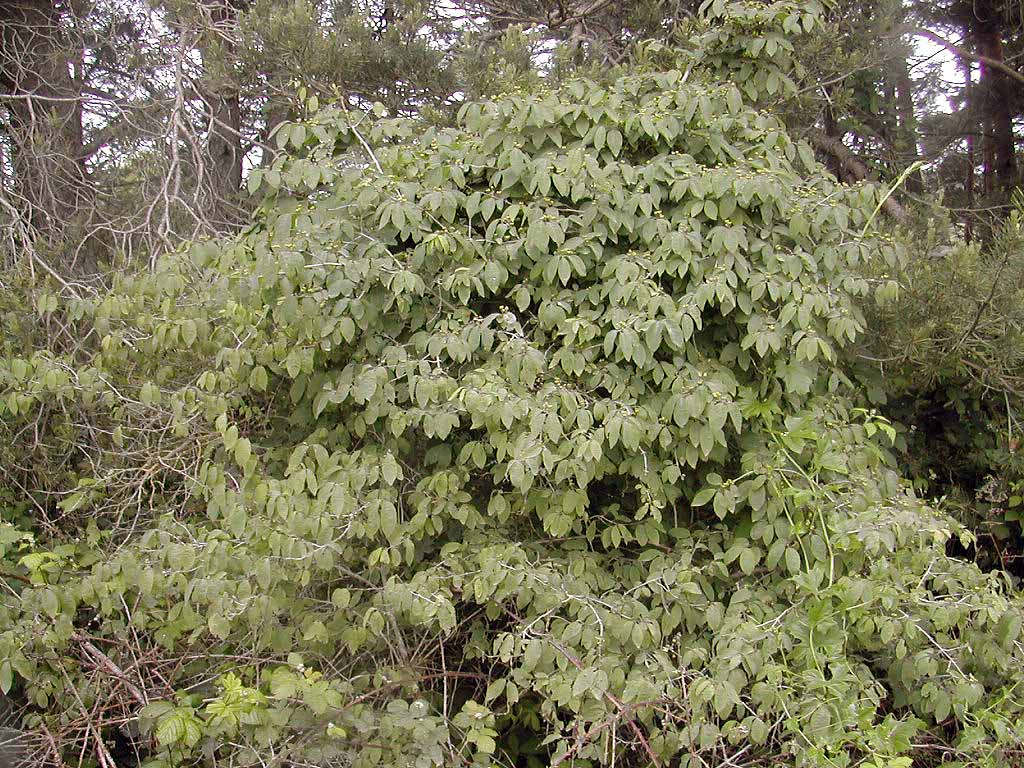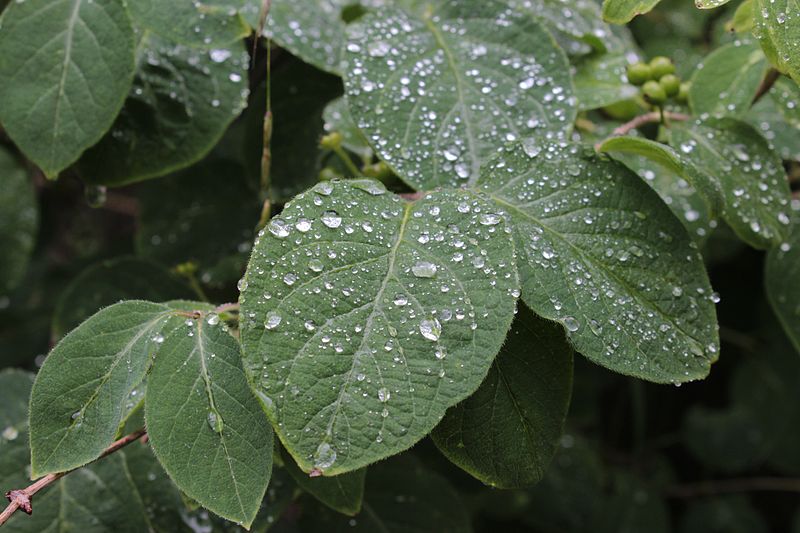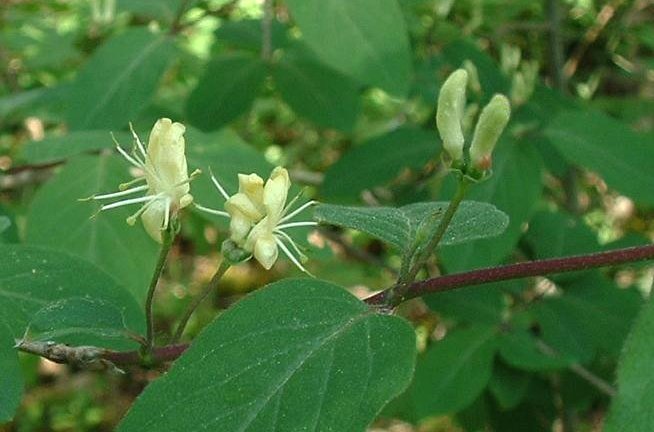| PSC 2620: Woody Trees and Shrub | Course Home | Week 2 |
Lonicera xylosteum - European Fly Honeysuckle
Plant Viewer

Image: SESA
 |
 |
| The elliptic leaves are pubescent and have a silvery hue. Image: Wikimedia user Sten Porse | White or cream colored flowers appear in the spring, but they are sparse and not a significant ornamental feature. |
Plant Description
Lonicera xylosteum, or European Fly Honeysuckle, is a fast-growing, large deciduous shrub (8-10 feet tall) with a good rounded habit. Similarly to L. tatarica, the branches can assume a weeping habit at the ends. The chestnut-colored stems are slightly pubescent (covered with small hairs). Regular pruning is necessary to prevent the plant from becoming too overgrown.
The leaves of the L. xylosteum are elliptic, silver-green and 1.5 inches long. Young leaves are very pubescent, with light hairs giving the leaves a silver tinge. Mature leaves are also slightly pubescent. White blooms occur in mid-spring and last for a couple of weeks. They are not as showy as other species of Honeysuckle. L. xylosteum also bears less fruit than other species of Honeysuckle. Any fruit borne is red and 1/2 inches diameter.
Landscape Use
Lonicera xylosteum is useful as a screen or border hedge, as the dense stems provide effective screening even during the winter. The European Fly Honeysuckle is also useful in places with poor soil conditions. The smaller cultivars are popular as foundation plantings.
Points of interest
Lonicera xylosteum does not perform well in consistently hot climates.
Notable Cultivars
Emerald Mound: A compact form, this variety has a slightly spreading form (3 feet high by 5 feet wide). The blue-green foliage grows very dense, making it ideal for foundation plantings.
Claveyi: A smaller cultivar (5-6 feet tall and wide) than the regular species, Claveyi is an excellent selection for parking lot plantings because of its high tolerance of salt. The blooms are a creamy yellow.
Miniglobe: This compact variety grows to be 4 feet high and wide. The white blossoms are small and the most inconspicuous of the species.